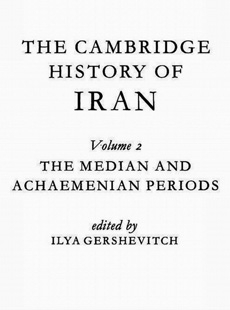| Éditeur : Cambridge University Press | Date & Lieu : 1989, Cambridge |
| Préface : | Pages : 930 |
| Traduction : | ISBN : |
| Langue : Anglais | Format : |
| Code FIKP : Liv. En. | Thème : Histoire |
|
Présentation
|
Table des Matières | Introduction | Identité | ||
 Versions
The Cambridge History of Iran - II | |||||
|
Chapter I Elam 1. The Emergence of the Elamite City-States The earliest part of present-day Iran to reach the level of urban and class civilization was the region which later was called Khūzistān and which in ancient history is usually designated by its Biblical name of Elam (.Hebr Elām). It lies outside what geographically is the Iranian Plateau properly speaking, and is a plain surrounded from three sides by mountains and crossed by rivers flowing from the highlands into the Persian Gulf - the Karkhah (or Saimarreh, the Assyrian Uknû, the Greek Choaspēs) and the Kārūn. (the Assyrian Ulāi, the Eulaeus of the Greeks),1 as well as by the river Āb-i Diz (Copratēs) running parallel to the Karkhah but halfway down the plain flowing into the Kārūn. Through the ages the courses of the Karkhah, the Kārūn and its affluents, and the Āb-i Diz, as they ran across the lowlands of Elam, changed many times, and many canals, later silted up, have at various times been led from them into the parched country around, or between the rivers as their connection. The part of the alluvial plain nearer to the sea was in ancient times covered by shallow freshwater lakes and salt or brackish lagoons, overgrown with reeds and gradually turning into marshland, and the coastline lay farther north than now. The winter on the plain of Elam is mild, the temperature but seldom falling below zero Centigrade, and the summer very hot indeed, the heat sometimes reaching 60° C. The precipitation is scarce, but the valley can be irrigated by the water of the rivers. Thus, the climate and the general ecological conditions of Elam were very similar to those of neighbouring Sumer in the lower valley of the Euphrates (now in Iraq); the historical development of both countries was also typologically similar and more or less simultaneous. But the two countries were separated by a stretch of marshes and desert difficult to pass, and so the usual road connecting Elam with Sumer led either along the foot-hills towards the north-west, or in the same direction upwards into the mountains along the valley of the Karkhah and then ... 1) The ancient Eulaeus (Ulāi was apparently the modern Ša'ur plus the lower part of the Karun. [Differently John Hansman, "Charax and the Karkheh", IA VII (1967),25-58.] | ||||